Discover the best things to do in Cyprus with this in-depth guide.
Cyprus. With its stunning beaches and crystal-clear waters to its ancient ruins and vibrant nightlife, it’s little wonder that it’s cemented its reputation as a European island escape with a difference.
Do you ever have one of those places that you remember with such pleasant memories that you’re almost worried about going back?
I had memories of a heady trip to Cyprus as a young teenager – I was smitten by the island’s stunning beaches, rugged landscapes and friendly people.
Fast forward quite a few years and my recent trips to Cyprus haven’t let my memories down.
Ready to explore some of the best things to do in Cyprus?
Read this practical AF guide – what to do, where to go and how to do it – to help you plan your trip.
The Best Things to do in Cyprus: Top 5
Hang Out on Cyprus’ Incredible Beaches

Let’s start off with this. If you’re somewhere cold and dreary, the idea of being on a beach somewhere in Europe might feel utterly insane, but it’s not.
What can you do in Cyprus? One of the most obvious answers is to settle down on a beach with a good book and enjoy the year-round sunshine.
Cyprus has a seemingly endless number of beaches – complete with warm turquoise waters and fine, white sand.
Nissi Beach is the island’s best-known.
Located in Ayia Napa, it’s an easy walk from the centre of the town. Conjure up the vision of a crescent-shaped beach with golden sand, shallow waters (perfect for families) and plenty of things to do to keep you occupied – water sports, bars, restaurants and nightlife – and you’ll have it right.
Head to Pissouri for a wealth of water sports in a sheltered cove (if you walk along the coastline, you can also find a few small beaches which are rarely inhabited by other sunseekers).
If you’re looking for somewhere a bit more rugged, Governor’s Beach boasts the clearest waters and a rocky coastline that’s ripe for exploration.
There are also tons of beautiful beaches in Paphos to visit if you plan to get some rest and relaxation.
If I had to pick one, I’d probably opt for Latchi, thanks to the smaller number of visitors but picture-perfect views from your sun lounger. Alternatively, Larnaca also has some cool beaches too.
Your biggest problem? Which beach to pick.
See the Ancient Town of Kourion

Cyprus has a long and interesting history.
When I say long, I mean it – there’s evidence of human habitation on the island dating back to 10,000BC. Over the years, Cyprus has been ruled by the Venetians, the French and the English (to name a few) – all have left their stamp on the island.
Few places can match Cyprus for the sheer number of historical sites dotted across the island. So if you’re wondering what you can do in Cyprus and love to discover ancient sites, you could spend your whole trip doing that.

If you only have time for one historical site in Cyprus, the ancient town of Kourion should be at the top of your list.
The Greco-Roman amphitheatre still stands today with far-reaching views out over the beach and valley below.
How To Do It: Self-Guided Archaeological Tour of Kourion
Go Hiking in The Troodos Mountains

The Troodos Mountains run across the centre of Cyprus, providing a welcome cool in the hot summer months and brimming with hiking opportunities.
Whether you’re looking for a multi-day expedition, or a short morning’s hike, the Troodos are the best place to start.
Some popular hikes in the Troodos mountains include:
- The relatively short hike (1 hour each way) from Pano Platres to Caledonia Waterfalls is a good place to start. Though uphill, the gradient isn’t steep and the sight of the falls is worth the effort.
- Olympus Summit: This hike is more difficult, and takes about 7 hours to complete. The summit offers stunning views of the island.
- Prastio – Akamas Ridge: This hike is also difficult, and takes about 8 hours to complete. It offers beautiful views of the Akamas peninsula.
Away from the mountains, there are a number of coastal and inland routes to choose from. Cyprus has a number of nature trails that are well marked and easy to follow if you’re a relatively seasoned hiker.
Visit Omodos – One of Cyprus’ Traditional Villages
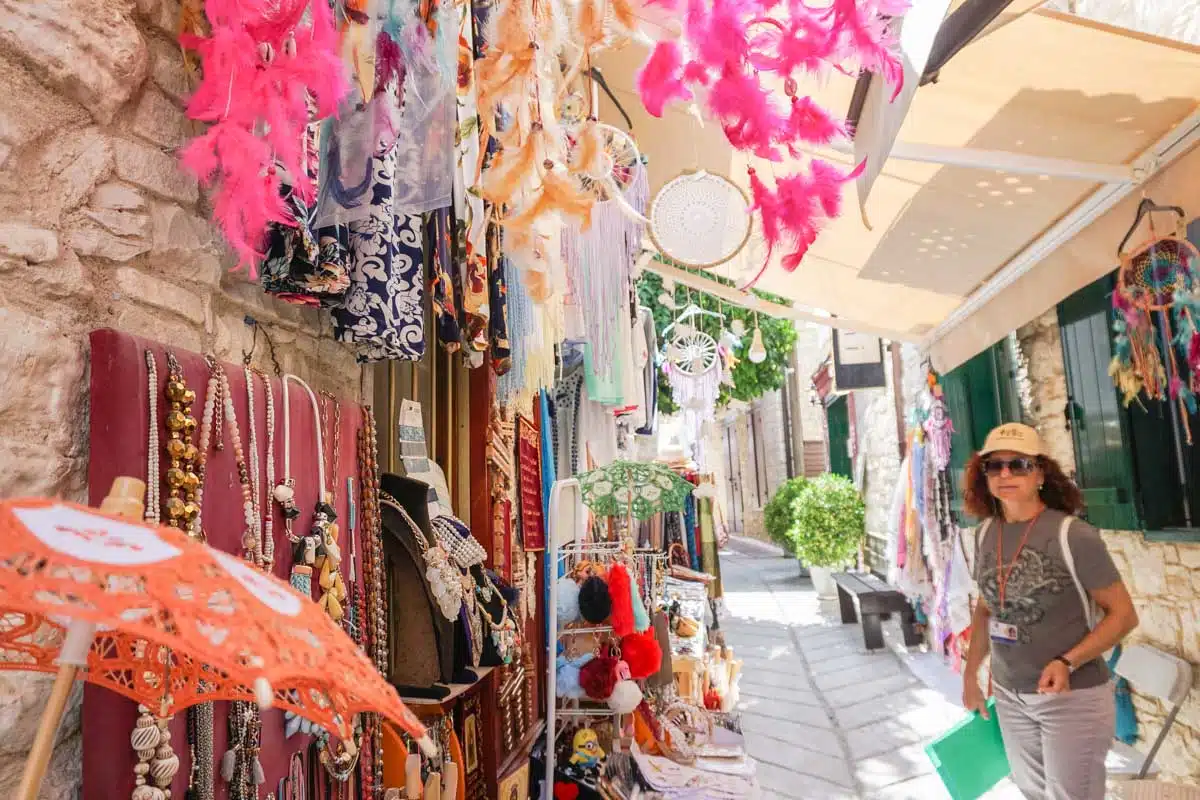
You’re likely to hear a lot of talk about Cyprus’s larger towns and cities: Nicosia Limassol, Larnaca, Paphos. But what about the island’s villages?
If you’re looking for the true heart of Cyprus, head to villages such as Omodos, Pelendri and Pissouri.
Each village boasts a unique culture and identity of which they are fiercely proud.
Omodos, in the heart of Cyprus’s winelands in the Troodos Mountains, has a long winemaking history but today thrives as a tourist destination and a welcome retreat from the coastal heat in the hot summer months.
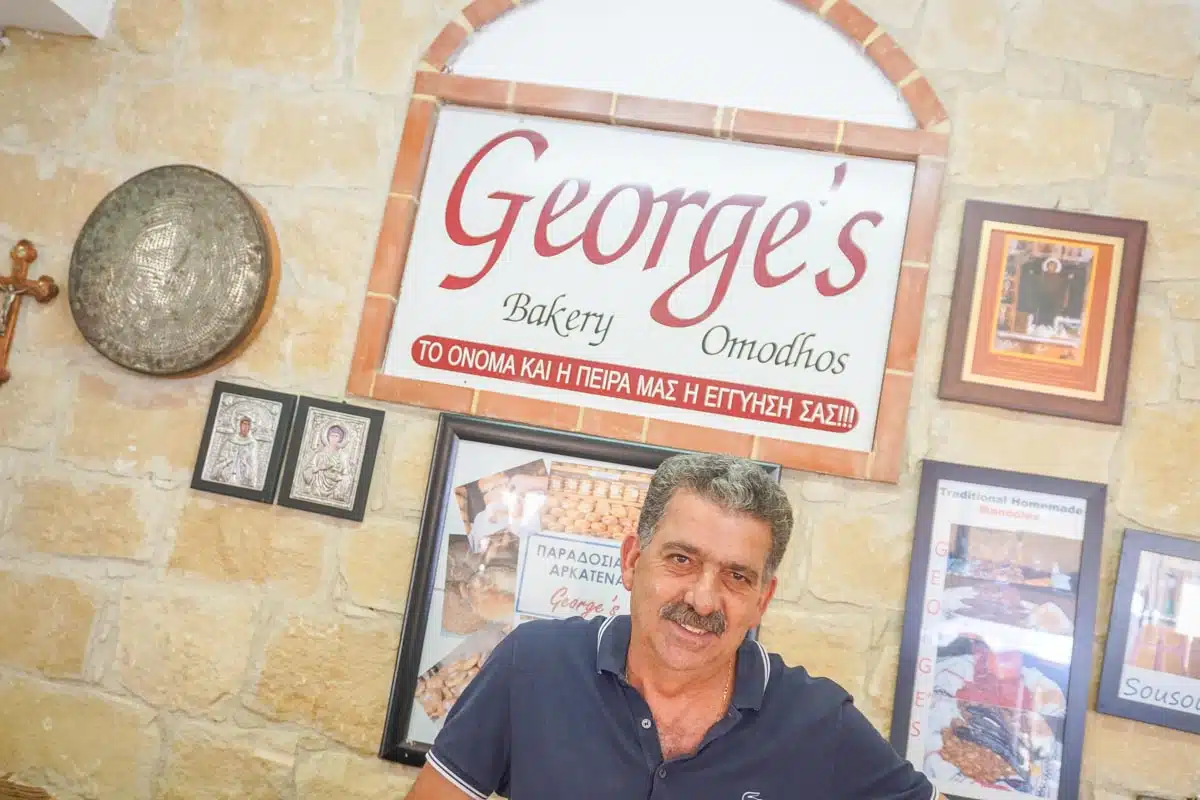
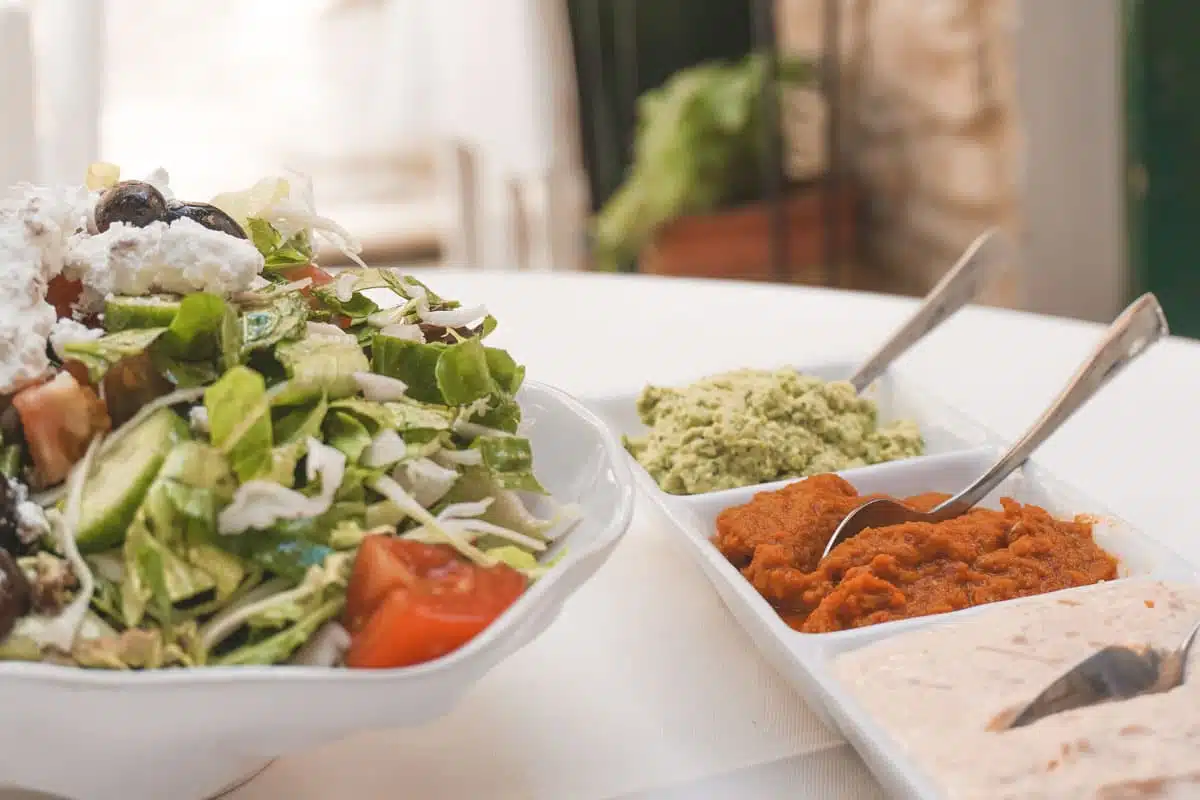
Stop in Katoi Taverna for lunch, it’s fabulous, then browse the village’s quirky array of shops and boutiques selling handmade lace, jewellery and George’s Bakery (a different George this time) who makes some of the island’s best bread.
See the Birthplace of Aphrodite

There is no shortage of mythological and legendary sites in Cyprus, but of all of these, Aphrodite’s Rock is the most iconic.
Whether or not you believe that Cyprus is the birthplace of Aphrodite (myth has it that she was born on the island’s south coast and then washed ashore at Petra tou Romiou), you can certainly see why this place could be deemed as special.
I won’t delve into the stories behind the legend of Aphrodite’s birth (in true mythological style, some of them are pretty grim), but many still believe today that if you swim around the rock you will be blessed with long life, beauty and true love.
Guess it’s always worth a go.
If not, you can settle for appreciating the crystal-clear waters and beautiful landscape instead.
Things to do in Cyprus
Visit The Tombs of the Kings (and Paphos’ Many Historical Sights)

If you’re looking for things to do in Cyprus and you want to explore a little bit of history, then the UNESCO World Heritage Site The Tombs of the Kings is a great place to start.
Located in Paphos, it was here that some of the island’s most wealthy and powerful citizens were buried during the Hellenistic and Roman periods.
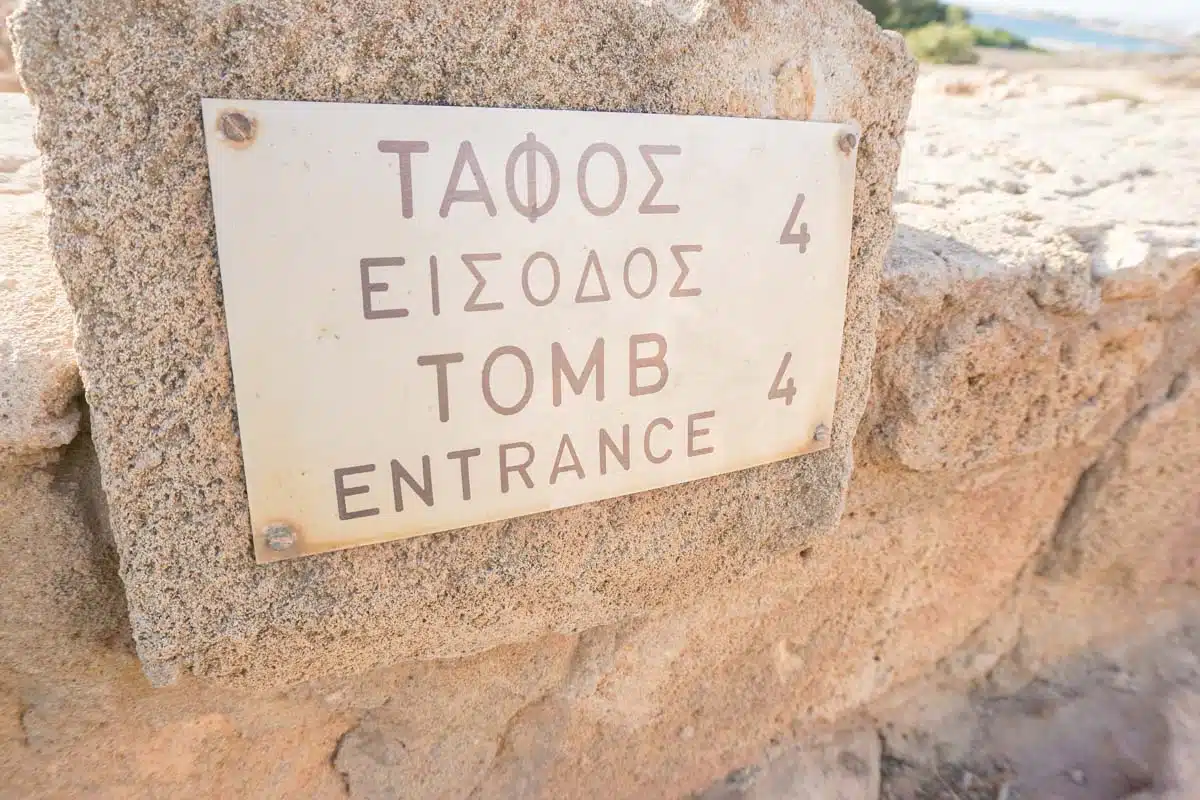
It is a fascinating labyrinth of ancient tombs and burial sites dating back to the fourth-century BC.The tombs are still remarkably well-preserved and give a fascinating insight into the lives of Cyprus’s ancient rulers.
Similarly, the mosaics in The House of Dionysos just outside of the centre of Paphos, offer a glimpse into the everyday aristocratic life of days past.
Spend time exploring Paphos and take a few excursions to its surrounds.
Explore Nicosia, Cyprus’ Charming Capital
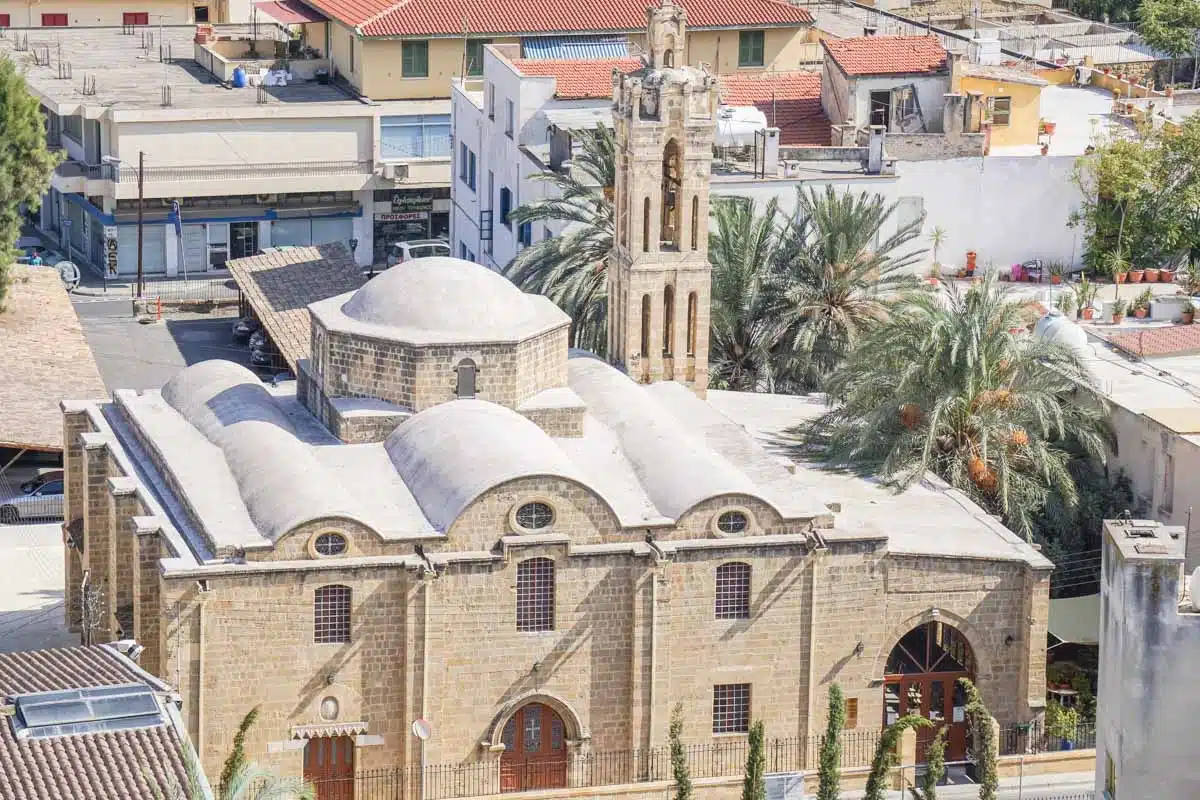
Nicosia (or Lefkosia in Cypriot) is the last divided capital in the world (it’s split between the Republic of Cyprus and Northern Cyprus – a state only formally recognised by Turkey). It’s also one of the oldest cities in the Mediterranean, dating back to around 1400 BC.T
oday, it’s a charming mix of old and new with Venetian-era architecture sitting alongside sleek high-rise buildings.
Take a wander through its narrow streets, pop into a cafe for some Cypriot coffee (strong and sweet, just the way I like it) and people-watch.


While you can read lots of interesting facts about Nicosia, it’s only in walking its streets and visiting its attractions that you can appreciate the history of the city that has been the Cypriot capital since the 10th century.
There are several museums dedicated to a range of subjects from archaeology to Byzantine art but if you only have time to visit one, CVAR should be your priority. The CVAR (Centre of Visual Arts and Research) Foundation have collected a range of paintings, books, memorabilia and clothing to tell the story of Cyprus throughout time.
The Shacolas Tower offers panoramic views over the city as a whole and a peek over to what lies on the other side of the dividing line.
How to Do It: Private Tour of Nicosia With a Local
Spend Time in Picture-Perfect Pissouri
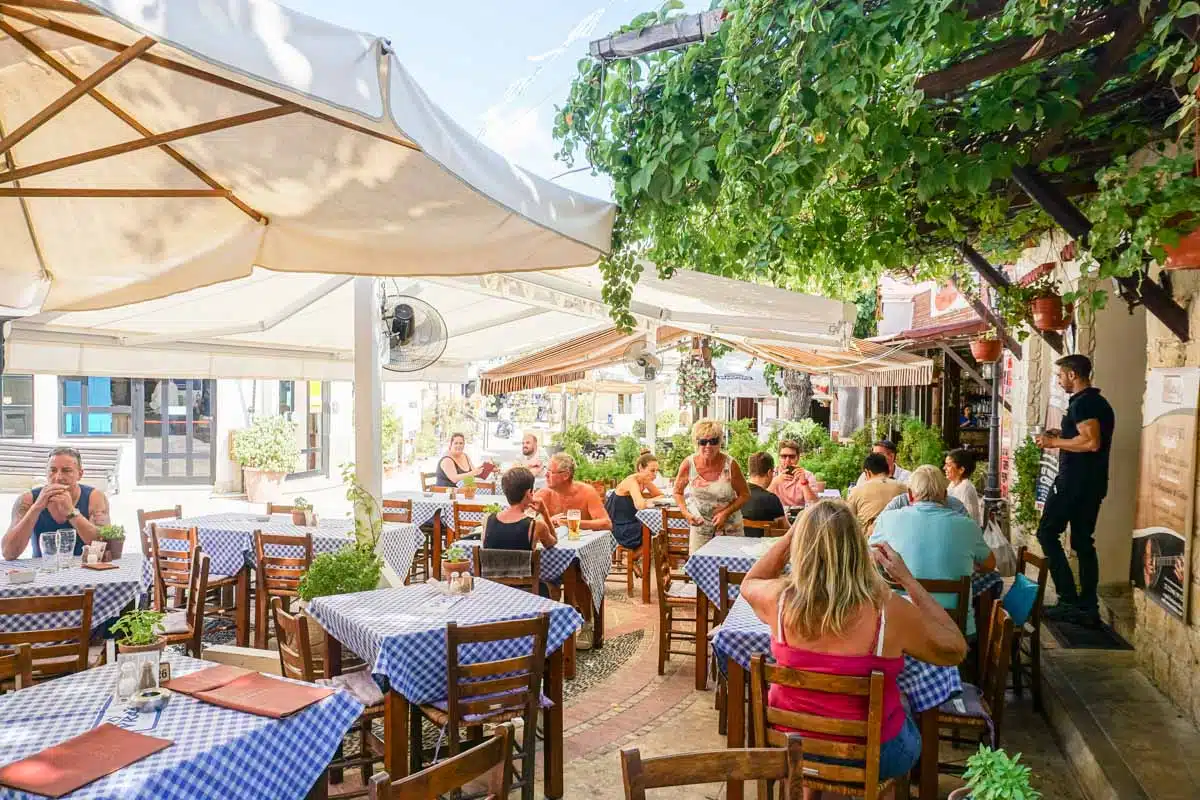
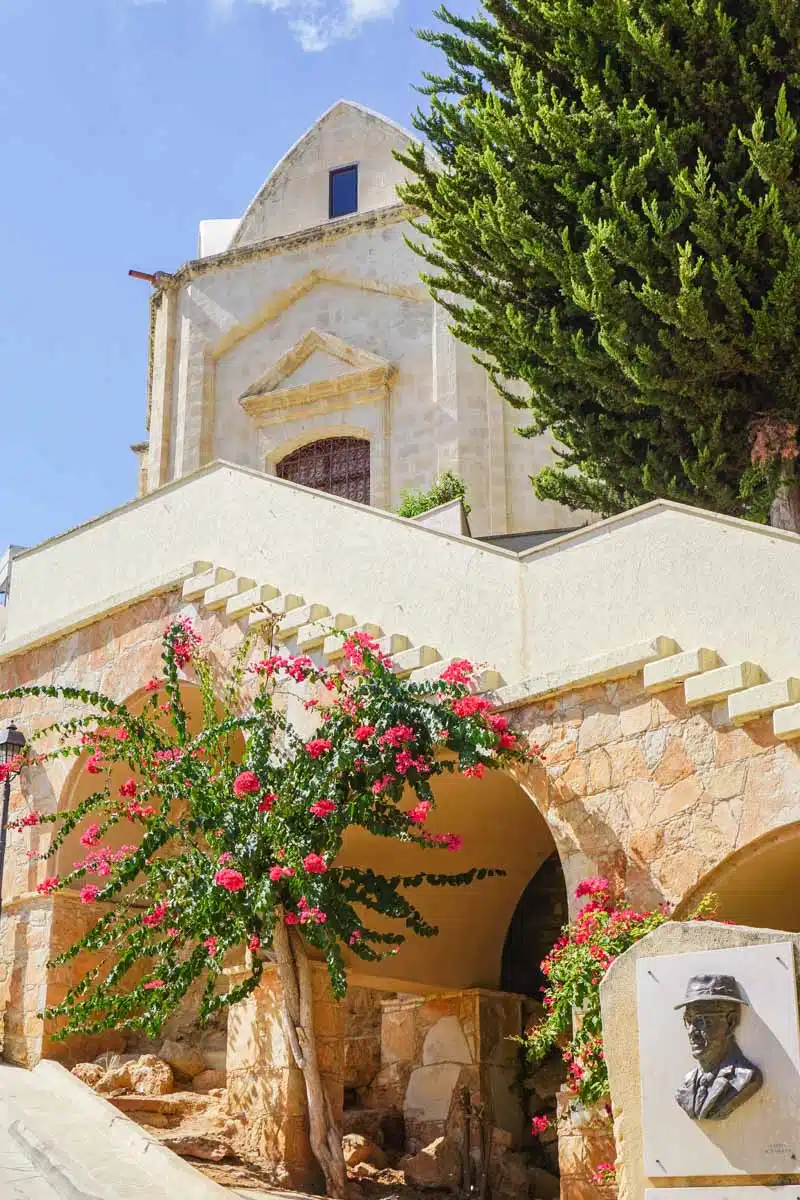
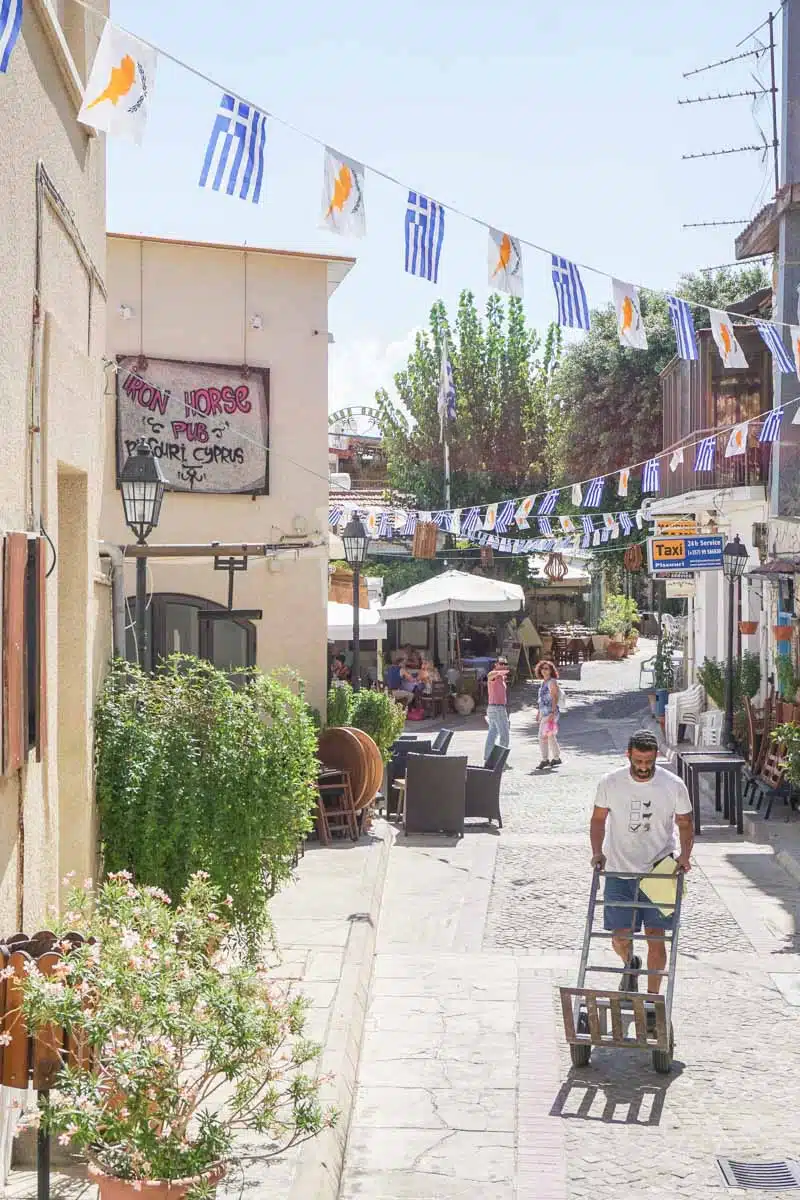
I couldn’t write a guide to places to visit in Cyprus and not mention gorgeous Pissouri.
Set on winding streets that lead down to the coast, is an enchanting combination of small shops, tavernas and bars and a long-standing tradition of halloumi making that has flourished in the modern day.
It’s this contrast between tradition and contemporary life that makes these villages so alive.
On the one hand, you can (and should) have a traditional Cypriot lunch in Vrakas Taverna – the first taverna in the village to have a radio and then a TV and the long-time hub of Pissouri’s laid-back social life.
On the other hand, you can walk around the corner for stellar views and perfectly-made cocktails whilst watching the sun set over Pissouri Bay.
Eat All the Cypriot Food
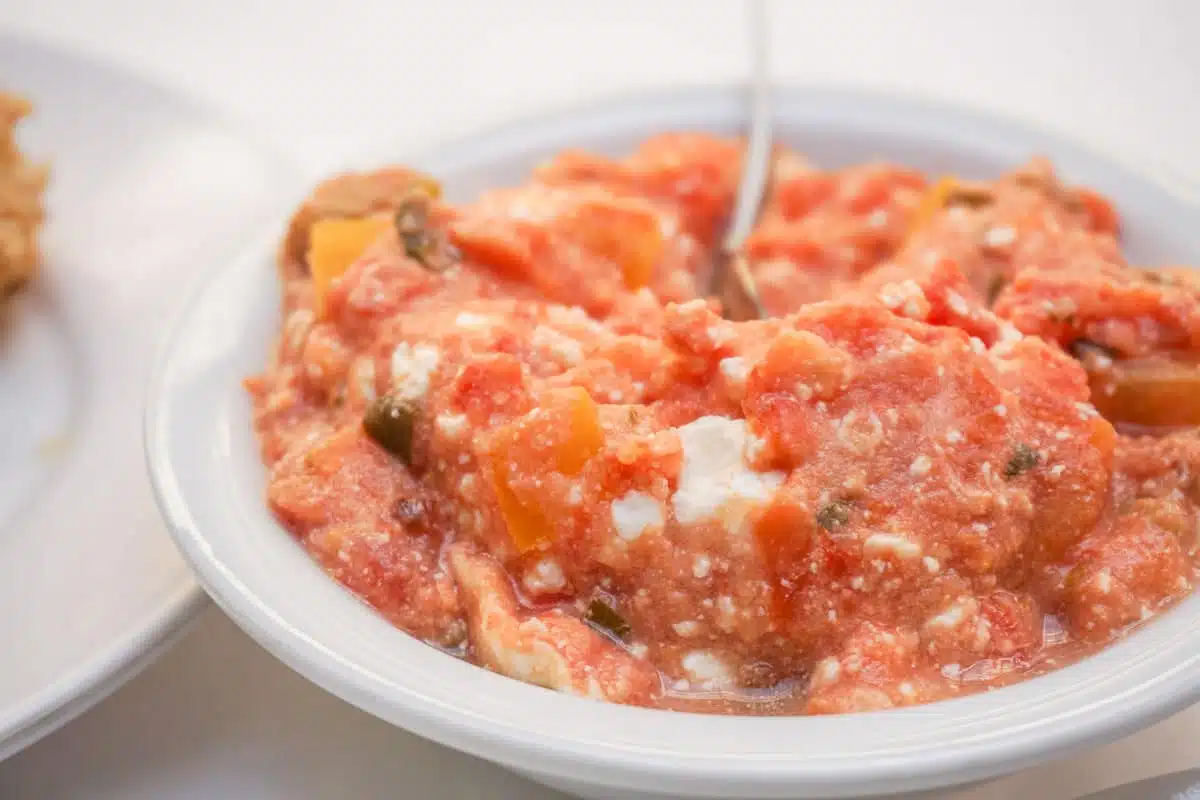
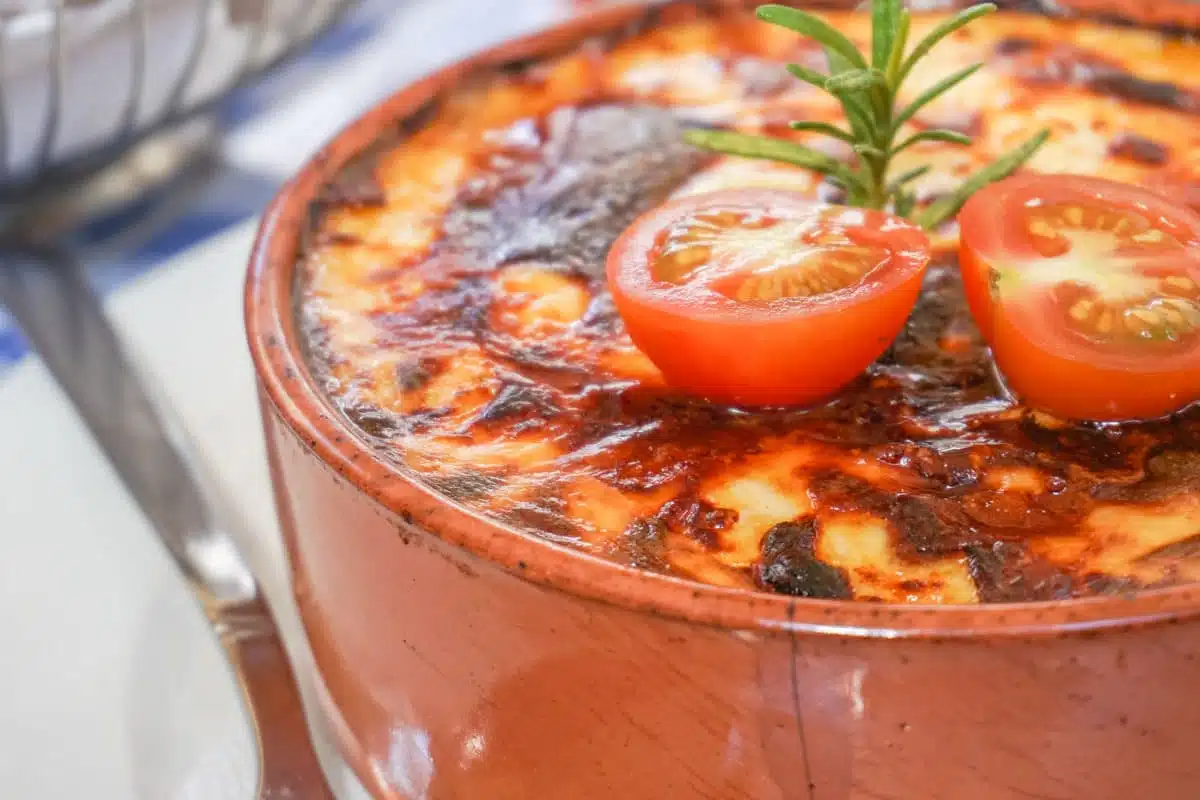
Cypriot food is a delicious blend of traditional Greek, Venetian, Turkish, French and British influences, paired with the freshest ingredients and bold flavours.Food is abundant – you could say that it’s the true heart of the island.
Mealtimes are as much a social gathering and celebration as they are about the actual food you are eating.
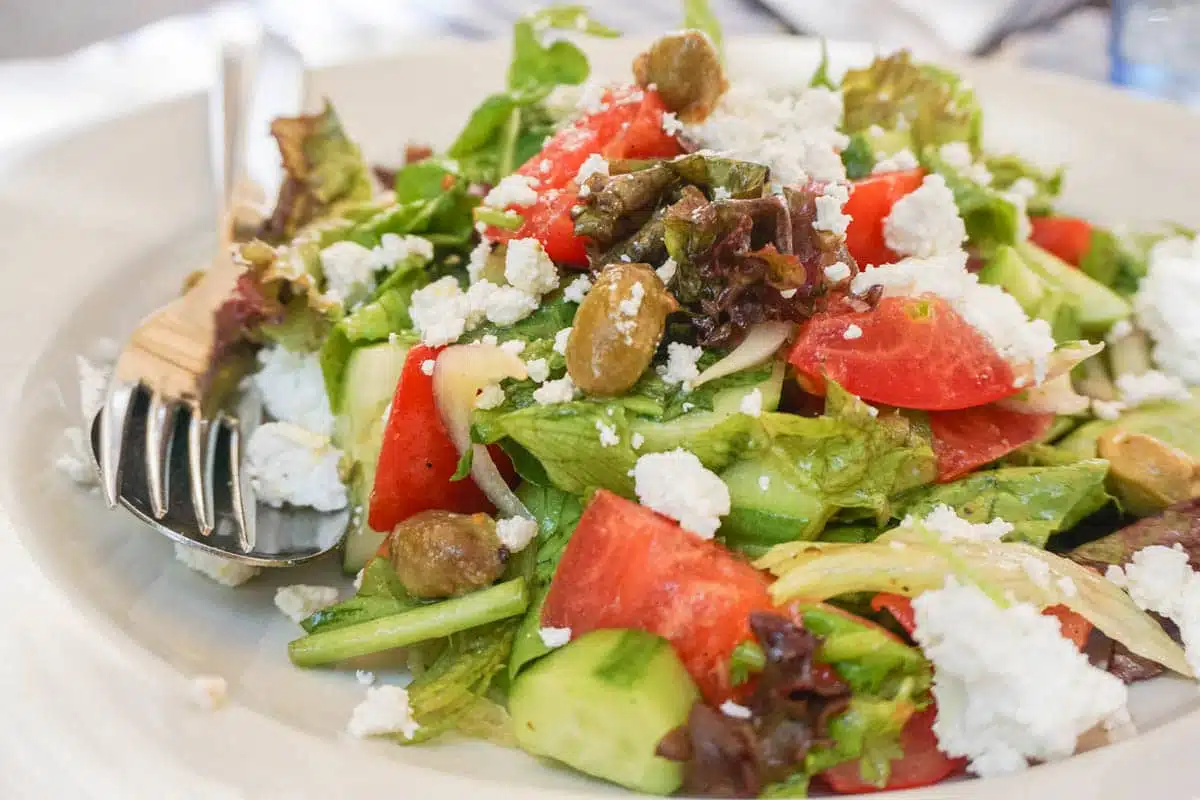
Traditional Cypriot dishes range from Sheftalia, a delicious herbed sausage made from lamb and pork that’s cooked on a charcoal grill, to stuffed vine leaves and Keftedes: meatballs made from mincemeat, fried potatoes, parsley and a hint of cinnamon.
As an island, there’s plenty of seafood but also a wide variety of vegetarian bean and pulse-based dishes – no one goes hungry in Cyprus.
Indulge in a Thalassotherapy Treatment in a Cypriot Spa
If all that food has got you feeling a little bit sluggish, why not try a thalassotherapy treatment?
Thalassotherapy is the use of sea water and marine plants in the treatment of various medical conditions. It’s said to be beneficial for things like stress relief, skin problems, respiratory problems and joint pain.
It’s not a new phenomenon – many of the things that thalassotherapy does today were things people used to go to the seaside for anyway. But, in Cyprus, you can experience it all with an extra layer of luxury and relaxation.
The Anassa Resort on Cyprus’s North West coast is particularly famous for its thalassotherapy treatments and has a team of experienced therapists on hand to help you relax and unwind.
Dip into History at Timios Stavros (Church of the Holy Cross)

Many visitors to Cyprus know to visit Latmos, an ancient temple dedicated to Apollo. However, it’s more than likely that they’ll miss the Church of the Holy Cross located just a short drive away.
Built in the 16th century and perched on top of a hill overlooking Paphos, the church is a beautiful example of Byzantine architecture.
It’s possible to climb up to the top of the bell tower for some amazing views over Paphos and its surrounding area.
There are also two chapels on site – one which dates back to early Christianity and another which was built in recent years.
The Church has been featured in many films over the years, most notably The Saint and Troy.
Unusual Things to do in Cyprus
Explore the Akamas Region on a Jeep Safari
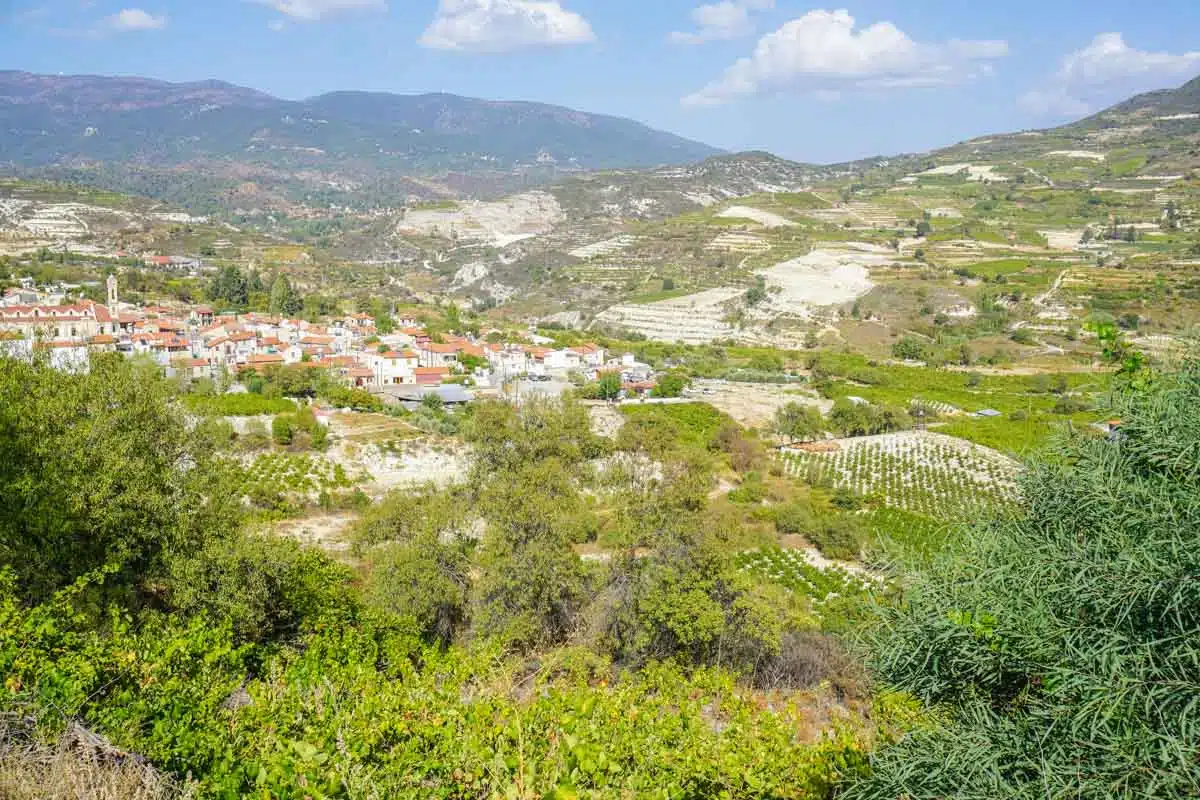
For a lot of people, Cyprus starts and ends at the beach.
Those people are missing out on a lot.
Sure, the beaches in Cyprus are gorgeous, but there’s so much more to the island than its shoreline.After one of the more unusual things to do in Cyprus?
I’d recommend spending a day or two exploring the Akamas region with George’s Jeep Safari. If you’re lucky, you might even get George himself – having grown up locally, there’s nothing (and noone) that George doesn’t know about and in the region, so he can take you to places you’d never think of finding yourself.
George creates a tailor-made itinerary depending on your preferences, so no two safaris are the same.
On ours, I went wine tasting, off-roading, learnt to make traditional Cypriot coffee, stopping off in a quiet Byzantine church and then watching the sunset over what George promised would be a show-stopping location.

I think we can all agree from the picture above that he was right.
How To Do It: Take This Jeep Safari to an Enchanted Lagoon
Go Wine Tasting

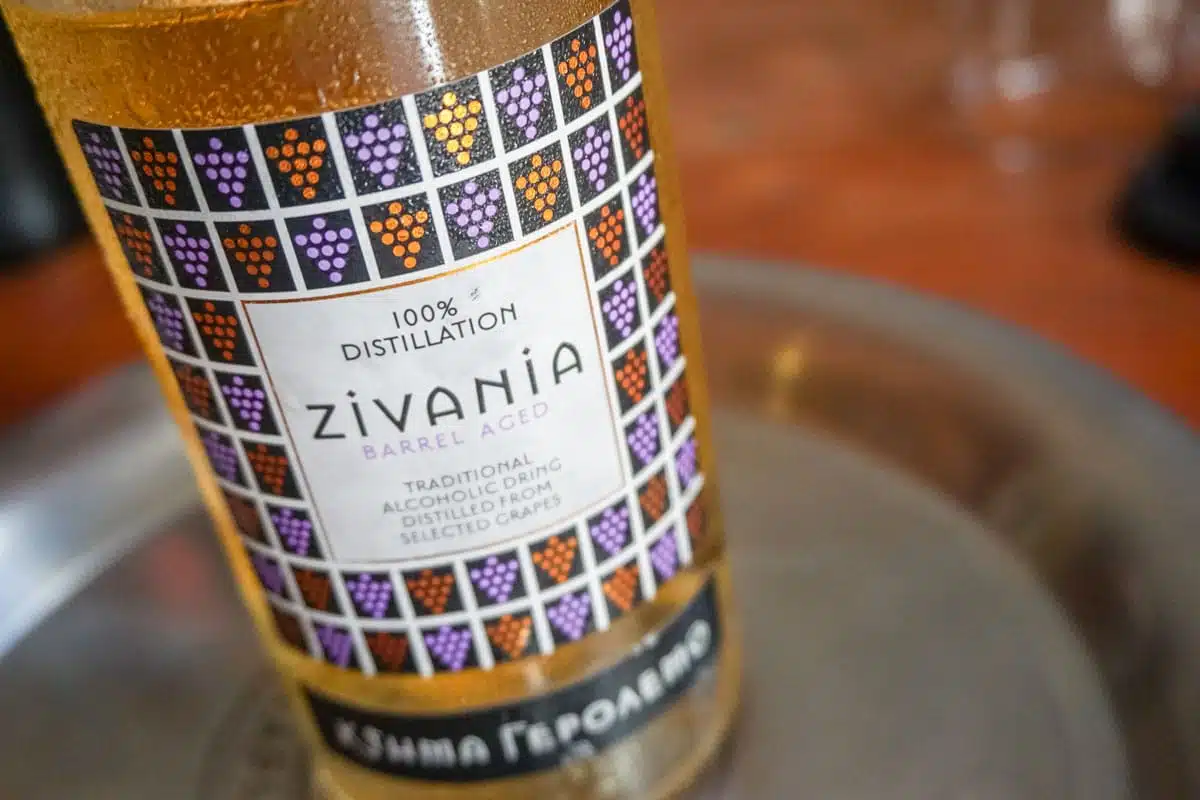
Cyprus has a history of winemaking that stretches back over 6,000 years. That’s 6,000 years of accumulated winemaking knowledge passed from generation to generation.
You can visit the island’s traditional winemaking villages such as Omodos (see above), but get a little outside of these and you can find contemporary vineyards such as Zambartas and Vasilikon wineries making world-class wines.
Unlike visiting vineyards in other countries, Cyprus has and uses a lot of its own grape varietals (Lefkada and Maratheftiko being two examples), so you get a chance to try something really different.
Unsurprisingly, they pair well with Cypriot food – speaking of which…
How To Do It: Troodos Mountains Wine Tour
Learn How Halloumi is Made
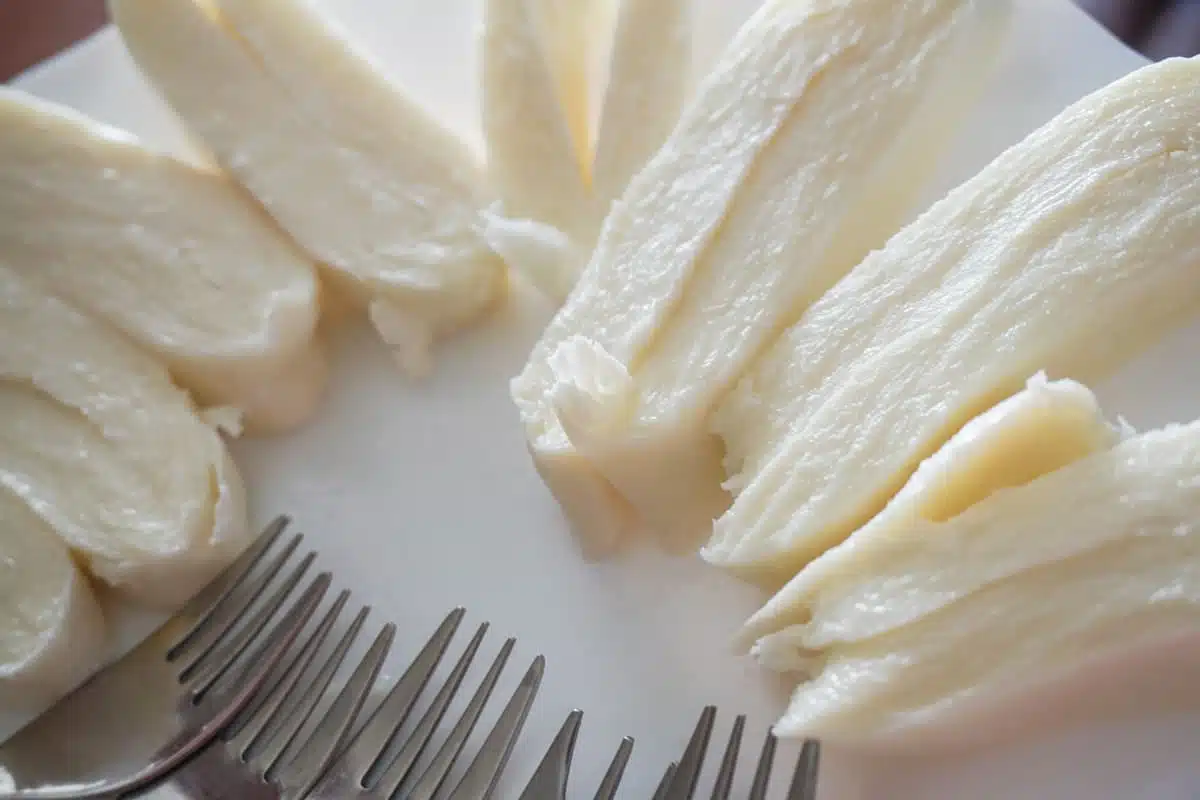
If you think you’ve had halloumi and haven’t eaten halloumi in Cyprus, I hate to break it to you, but you’ve been deceived.
I thought I’d eaten halloumi (you know, tasty, a bit squeaky, great for a bbq), until I visited Vasilis Agathokleous, a small halloumi producer on the outskirts of Pissouri.
I don’t want to sound dramatic but this halloumi may change your life.
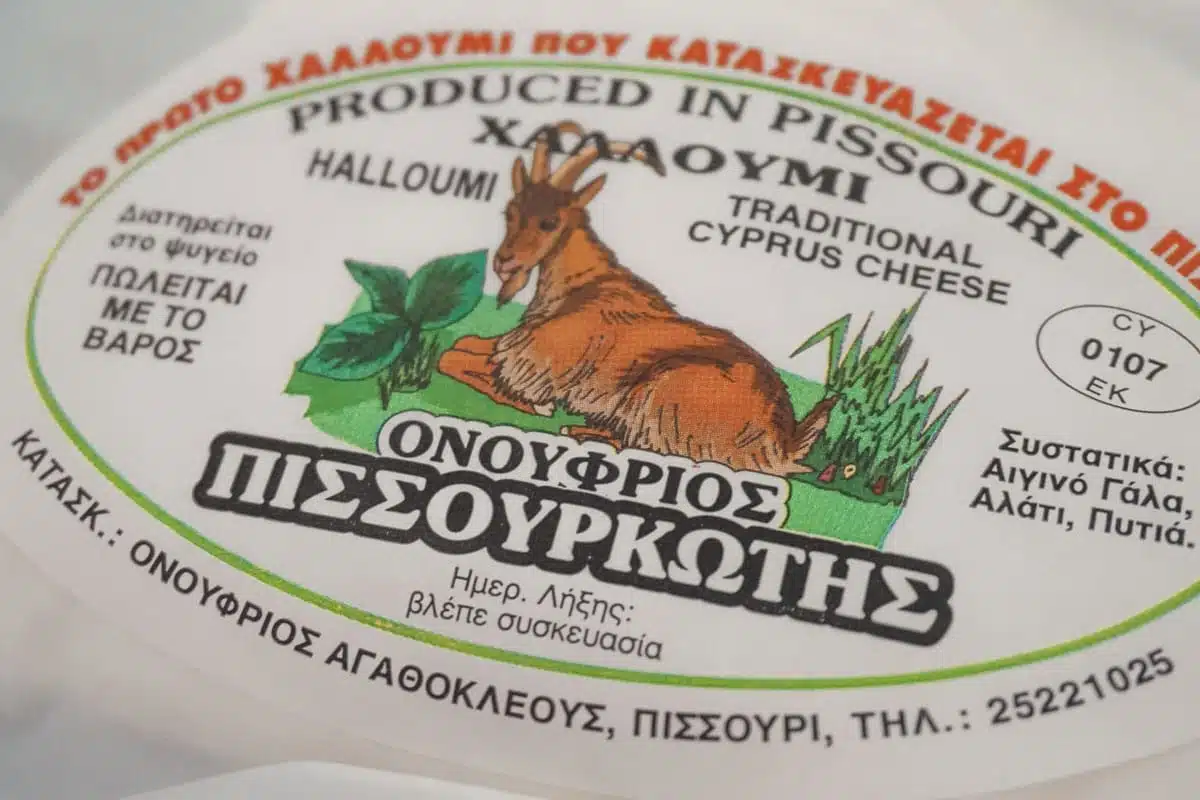
Creamy, salty, tangy, smooth and rich – you can eat this halloumi moments after it’s been made, or age it for up to a year to help it develop more intense flavours.
Unfortunately, Vasilis doesn’t currently export his halloumi so you will just have to go to Pissouri with an empty suitcase and fill it up in his small factory to bring home.
Believe me, it is very much worth it.
How to do it: Cheesemaking Day Trip with Brunch
Try Your Hand at Watersports in Latchi (And Visit the Blue Lagoon)

An island with calm and warm waters is always going to attract watersports lovers and Cyprus is no exception. Scuba-diving, parasailing, snorkelling, water skiing – you name it, you can do it.
Cyprus is a world-renowned dive site thanks to a wide array of marine life, interesting wrecks and near-perfect visibility.
Those wishing for a slightly more sedate time can take a boat tour for some off-shore swimming and snorkelling. There are daily boat tours from the small village of Latchi to the blue lagoon – it’s pretty much impossible not to dive in and explore the warm waters once the boat anchors down.
If the weather’s right, the bay is perfect for a spot of parasailing and kitesurfing, but if not, sailing along the coastline with the wind whipping through your hair and a spot of swimming here and there is adventure enough.
How To Do It: Visit on This Paphos Day Trip to Akamas & The Blue Lagoon
Dive Cyprus’ Many World-Class Dive Sites
Cyprus is a world-renowned dive site thanks to a wide array of marine life, interesting wrecks and near-perfect visibility.Famous dive sites include the Zenobia Wreck (a ferry that sunk off Larnaca’s coast on its maiden voyage) and the HMS Cricket in Limassol.
See the Beauty of the Monastery of Agios Georgios Alamanou
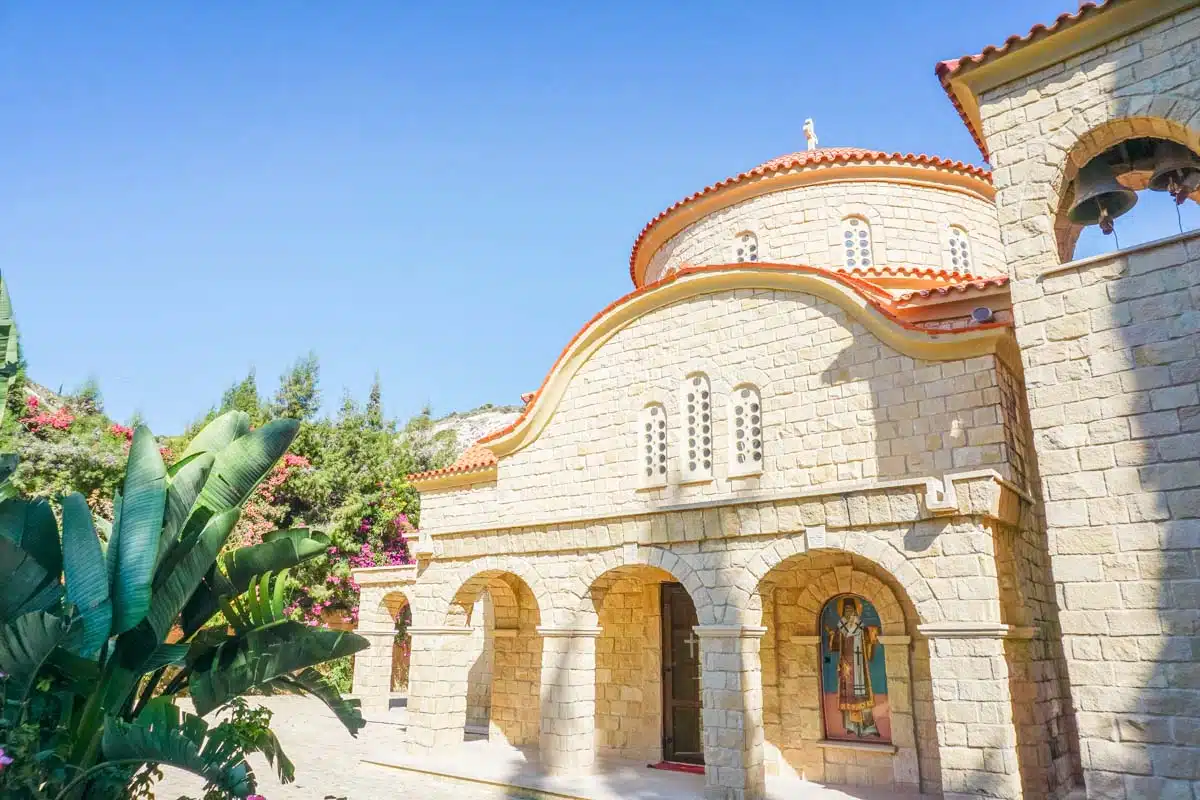
If you find yourself in the area near Limassol , be sure to make a stop at the Monastery of Agios Georgios Alamanou. The monastery was founded by two monks in the 20th century and is still functioning to this day – albeit as a woman’s commune.
The Best Things to do in Cyprus: Practical Tips For Your Trip
- The country is easy enough to get around with tours / driving and most things can be visited as a day trip from the capital, Nicosia (Lefkosia).
- Driving in Cyprus is fairly straightforward. The roads are well-maintained and signposted making driving from A to B without getting lost a breeze. If you’re planning on doing things that require a car, it is best to hire one for the duration of your stay in Cyprus as public transport isn’t always convenient (especially if you want to explore some of the things on this list).
What To Do in Cyprus: Map
Love This? Save and Share on Pinterest

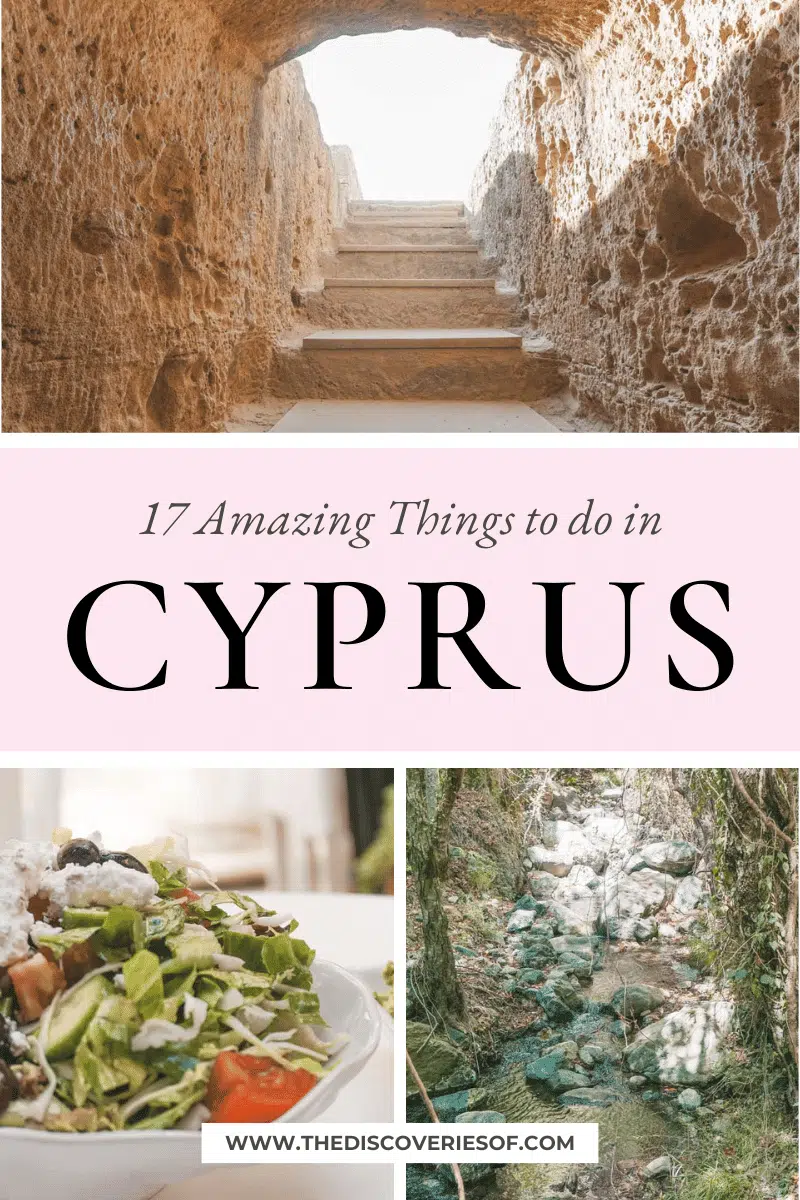



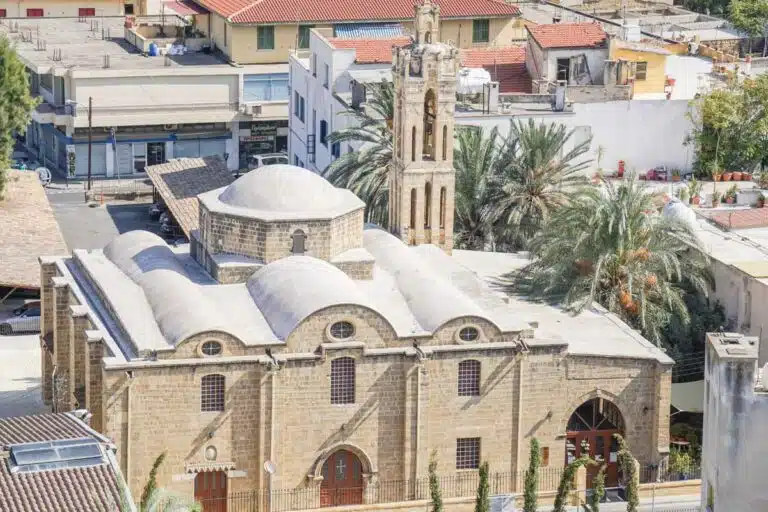


Love your comments and love Cyprus, thank you for taking me there in your dialogue . I’ve visited twice, my oarents birthplace and my ancestory, my cousins etc and can’t wait for more of what you just described fun fun fun.??
I’m so glad you love it – it’s such a beautiful island, am already planning my next trip 🙂